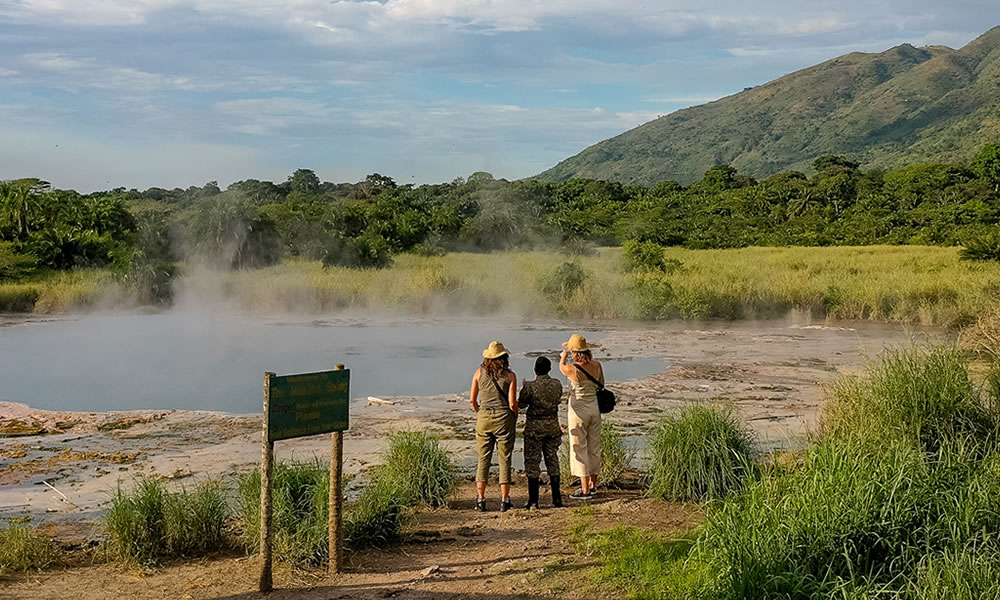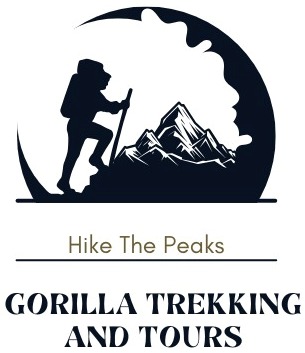Semuliki National Park is located in the western Ugandan district of Bundibugyo, which shares a border with the Democratic Republic of the Congo. The Rwenzori Mountains border the park from the southeast and Lake Albert from the north. The limits of the park are home to the Lamia and Semuliki rivers. Due to its relatively level terrain, Semuliki National Park is vulnerable to flooding during the rainy season when the Park Rivers receive excessive amounts of precipitation.

In an effort to stop deforestation, Semuliki was designated a national park in 1993 after starting as a forest reserve in 1932. It’s common to mix up Semuliki National Park with the nearby Semliki Wildlife Reserve. The vast Ituri Forest, which reaches all the way to the River Zaire, is extended into the woodlands of Semuliki. This extension suggests that the park is home to a large number of the animal and tree species present in Central Africa. Semuliki’s conditions are more akin to those in central Africa than they are to any other national park in Uganda, Kenya, or Tanzania.
The park is home to sixty different species of mammals, including the bay duiker, Beecroft’s Anomalure, flying squirrels, bush babies, bush pigs, civets, dwarf antelope, elephants, fruit bats, Fire-footed Rope squirrel, forest buffalos, pygmy hippos, leopards, Little collard fruit Bat, target rats, water chevrotains, water bucks, warthogs, Uganda Kob, Red-legged Sun Squirrel, Sitatunga, target rats, pygmy flying squirrel, Red-legged Sun Squirrel, White-bellied Duiker, and the Zenker’s Flying Mouse. The park forests are home to about eight different kinds of primates, including olive baboons, chimpanzees, De Brazza’s monkeys, Guereza Colobus, vervet monkeys, and blue monkeys, in addition to about 300 different species of butterfly, including charaxes and forest swallowstails. Additionally, there are night primates such as galagos and pattos.
Human encroachment into Semuliki National Park poses a persistent threat to the park’s trees and fauna. For their meat, the park’s animals are still hunted, and the woodlands supply fuel, vegetables, and herbs. Outside the park are two primary tribes: the Bakonjo and Bamba.
Things to do in Semuliki National Park
Visiting the Sempaya Hot Springs
The park has gained immense fame due to its two hot springs. The local legends about their creation captivate tourists more than the scientific explanation. Both a male and a female hot spring exist. The female hot spring is known as Nyasimbi, whereas the male hot spring, known as Bintente, has a diameter of roughly 12 metres. More over a kilometre away, a boiling geyser shoots out vapour and bubbling water several metres high.
It takes ten minutes for the water that is rushing out to boil eggs. Previously, the forest’s inhabitants would utilise the hot springs to prepare meals, but park administration has restricted this practice to allow more visitors to the area. A variety of bird species and small primates can be seen scuttling up and down the trees as people make their way towards the hot springs. To allow visitors to observe the hot springs from a safe distance, the park officials have constructed a tower and boardwalk. Typically, the local tribes host cultural dances to amuse tourists who have come to see the hot springs. In addition to the hot springs, wildlife, and primates, tourists can explore the Mungiro Falls or take a stroll through the neighbouring forest.
Visiting the Semuliki River
The Semuliki River spans over 160 kilometres. One of the water sources that feeds the vast river Nile is this murky river through the forest. Along with hundreds of birds, the river is home to hippos and crocodiles. Wandering along the river as it flows through forests and rift valley bottoms is a favourite activity for tourists.
Forest and Nature Walks
Wandering through the forest jungles to look for plants, animals, butterflies, and primates is a popular activity in the park. Forest treks usually begin at the entrance to Sempaya Park and conclude at the hot springs. There are three authorised walking paths in the park. The eight-kilometer Sempaya Nature Trail, the eleven-kilometer Red-Monkey Track, and the thirteen-kilometer Kirumia Hiking Trail are three among them. Basic equipment, like a machete, are necessary for hikers to take in order to cut routes through the dense forest undergrowth. A guest must bring their own camping equipment if they wish to camp in the forest.
Game Drives
In Semuliki National Park, game drives provide the chance to see the 52 mammals that have already been described. There are three main game drive routes in the park that go through the plains of savannah. The park personnel arranges game drives during the day and at night. To navigate the park’s more challenging areas, especially during the wet season, visitors must have a reliable four-wheel drive vehicle.
Chimpanzee Tracking
Chimpanzee Tracking Permits are required for visitors. While monitoring the chimpanzees, visitors can expect to encounter a variety of smaller primates, including olive baboons, red-tailed monkeys, Dent’s Mona monkeys, black and white Colobus monkeys, red Colobus monkeys from Central Africa, grey-cheeked mangabeys, and many more. It’s important to come prepared with the right clothing and equipment to prevent thorns, jagged tree branches, and stinging insects. Give them a little snack and enough water to drink.
Cultural Visits and Experiences
There are four native tribes living in the vicinity of the national park. Any of the four tribes residing on the park’s boundaries may be visited by guests. On the slopes of Mount Rwenzori, the Bakonjo and Bamba people raise crops (rice, potatoes, cocoa, and matooke/bananas), while the Batwa pygmies hunt and gather in the jungle. The Batuku are pastoralists who reside in the park’s northern region. These tribes’ livelihoods are changing because to tourism and industrialization, especially the Batwa. The Batwa people have been displaced from their natural habitats in the jungles of Rwanda, Uganda, and the Democratic Republic of the Congo. Resettlement of some Batwa in Semuliki National Park has taken place in the vicinity of Ntandi.
Bird Watching
One of Uganda’s greatest locations for birdwatching is Semuliki National Park. Because Semuliki National Park is an extension of the larger Ituri forest in the Democratic Republic of the Congo, which runs up to the Zaire River, it is home to half of the bird species found in the DR Congo. Species from central Africa can now enter Semuliki National Park thanks to this extension. You can go birdwatching in the park in the woodland, behind the ranger station, or near the Sempaya hot springs.
Best time to visit Semuliki National Park
The Semuliki National Park is open all year round. Nonetheless, April through June and July through September are the ideal months to travel during the dry seasons. There is less mud in the park during these dry months, making driving across it easier. It is challenging to navigate the park during the wet season, which occurs in December through March and October through November. As the rains fill up the rivers, certain parts of the park flood.
